email: the scourge of office productivity
And the thing that endears me to IMs compared to email:
.... you don't get spam.
cheers.
ok. let me now post this through email ;)
You can find the original post and post comments here.
Mirror site of http://rrelos.net/techblog

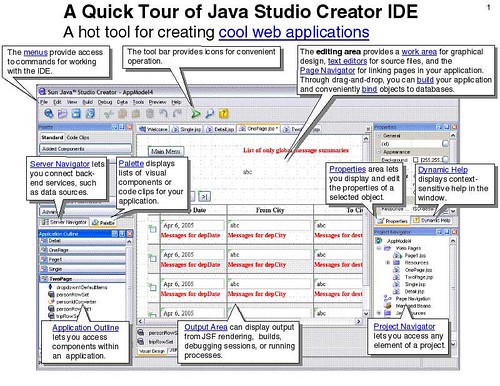 Talk about marketing strategies. Sun is offering its commercial Java developer tools for free (as in beer). Developers will not have the software and opportunity to test-drive such products in exchange of ads or nagging, but they can have the full version. No ifs, no buts. Sun is making the suite available for users of the NetBeans platform and Sun Develper Network (SDN) members FREE copies of the Java Studio Creator ($99 value) and Java Studio Enterprise ($1,895 value) development tools.
Talk about marketing strategies. Sun is offering its commercial Java developer tools for free (as in beer). Developers will not have the software and opportunity to test-drive such products in exchange of ads or nagging, but they can have the full version. No ifs, no buts. Sun is making the suite available for users of the NetBeans platform and Sun Develper Network (SDN) members FREE copies of the Java Studio Creator ($99 value) and Java Studio Enterprise ($1,895 value) development tools. In my recent post where I got a violent flak from one of my readers. I do believe that whatever I post, for that matter, everyone's posts in their own blogs composes freedom. Freedom to express. The anonymous
In my recent post where I got a violent flak from one of my readers. I do believe that whatever I post, for that matter, everyone's posts in their own blogs composes freedom. Freedom to express. The anonymous 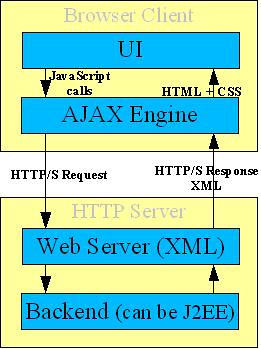 I am not sure whether the post I commented with meant [1] producing and consuming JSON data in java applications or [2] AJAXifing content by meer evaluating JSON through eval. Let me tell you that it is not as simple as you thought. You might be one of the Architects I've been talking about before, who mainly dwell in buzzwords. Yeah, speaking golden sweet-sounding buzzwords will definitely turn PHB heads and they will adore you like a god.
I am not sure whether the post I commented with meant [1] producing and consuming JSON data in java applications or [2] AJAXifing content by meer evaluating JSON through eval. Let me tell you that it is not as simple as you thought. You might be one of the Architects I've been talking about before, who mainly dwell in buzzwords. Yeah, speaking golden sweet-sounding buzzwords will definitely turn PHB heads and they will adore you like a god.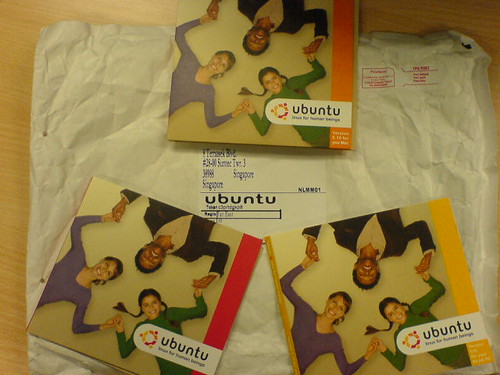
"This implies you can transfer and read data from web/app server in JSON format and read the same in client (web browser or JavaWebStart) side easily -- all you have to do is to make reader from your (URL) input stream and eval it!"
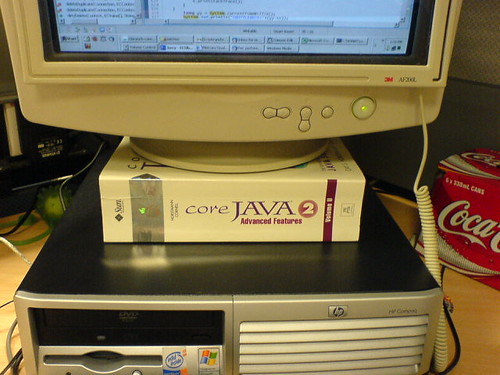
 The road to full Java freedom is almost at hand. With GNU Classpath team's effort, a free and open source JVM is in near completion, at least on the compatibility with Sun's JDK 1.4 specs. I am on the impression that Apache's Project Harmony may fork Classpath or leverage on it. Well, whatever the outcome is, still, we have a free JVM.
The road to full Java freedom is almost at hand. With GNU Classpath team's effort, a free and open source JVM is in near completion, at least on the compatibility with Sun's JDK 1.4 specs. I am on the impression that Apache's Project Harmony may fork Classpath or leverage on it. Well, whatever the outcome is, still, we have a free JVM.Much more efficient painting for large Free Swing GUIs. Improved accessibility support. HttpURLConnection rewrite. Official CORBA VMCID assigned. Start of RMI over IIOP support. Qt4 support for OS-X. Much improved Free Swing Metal theme. Free Swing Demo includes theme switcher example (Metal, Ocean, GNU). JBoss now starts up and Jonas testsuite passes for 95%. Support for the javax.sound.midi framework and experimental DSSI and ALSA service providers. Early version of the popular StAX API. Now has 96% coverage of 1.4 API.
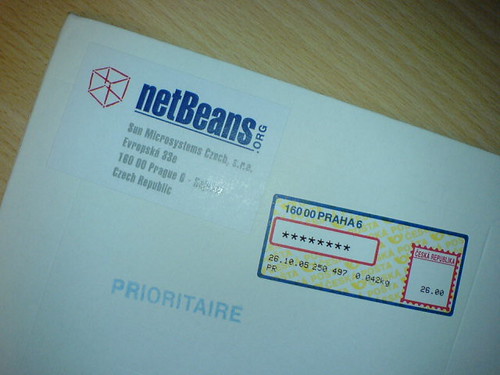 NetBeans 5 Beta is out. But here's a little goody that only NetBeans.org provide: Free CD, delivered directly to your doorsteps. It's a-la Ubuntu, you may say. We'll wait for some more time and it's NB 5.0's turn to be delivered. Nothing beats true F/OSS software being obtained also for free. Yes, there were free CDs from IBM/Rational, from Veritas, from Oracle, from anybody else, but none of them is F/OSS. That's why I am so appreciative of NB as well Ubuntu. Can't wait to get my copies. Go get yours quick. My friend got his, straight from Praha (Prague, Czech Republic) ;)
NetBeans 5 Beta is out. But here's a little goody that only NetBeans.org provide: Free CD, delivered directly to your doorsteps. It's a-la Ubuntu, you may say. We'll wait for some more time and it's NB 5.0's turn to be delivered. Nothing beats true F/OSS software being obtained also for free. Yes, there were free CDs from IBM/Rational, from Veritas, from Oracle, from anybody else, but none of them is F/OSS. That's why I am so appreciative of NB as well Ubuntu. Can't wait to get my copies. Go get yours quick. My friend got his, straight from Praha (Prague, Czech Republic) ;)